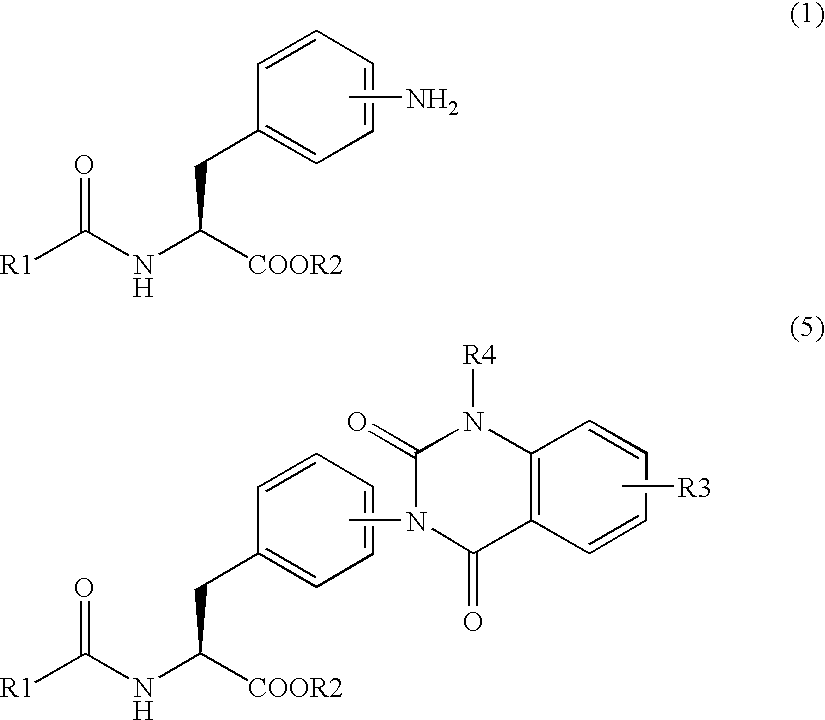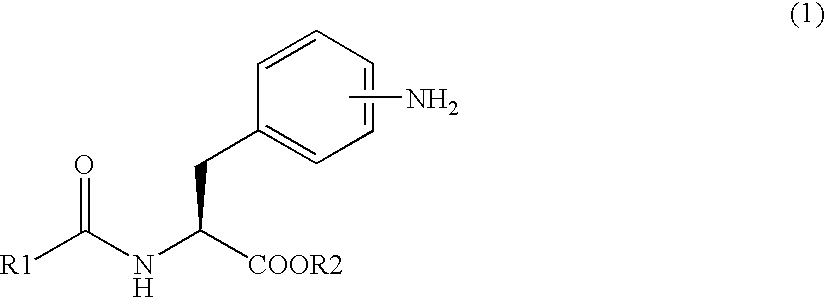Methods for producing phenylalanine derivatives having a quinazolinedione skeleton and intermediates for production thereof
- Summary
- Abstract
- Description
- Claims
- Application Information
AI Technical Summary
Benefits of technology
Problems solved by technology
Method used
Image
Examples
example 1
[0162] Synthetic example of the compound (8)
Synthesis of methylester of 2-(3-{4-[2-(2,6-dichlorobenzoylamino)-2-methoxycarbonylethyl]phenyl}ureide)-5-dimethylaminobenzoic acid
[0163] Method 1: In case of using 1,1′-carbonyldiimidazole (CDI) as a carbonyl group-introducing reagent
[0164] 9.73 g (59.41 mmol) of 1,1′-carbonyldiimidazole was added to 310 mL of acetonitrile and dissolved. The solution was cooled down to 10° C. or lower and 20.78 g (56.58 mmol) of methylester of Nα-(2,6-dichlorobenzoyl)-4-amino-L-phenylalanine of the formula (6) was added thereto and stirred. 2 hours later, 15.06 g (54.50 mmol) of methylester of 2-amino-5-(dimethylamino) benzoic acid / dihydrochloride of the formula (7) was added, heated up to 50° C. and stirred for 2 hours. After completion of the reaction, 62 mL of methanol was added to the reaction solution, and the solution was cooled down to 10° C. or lower. After maturing 10 hours or more, the crystals were separated by filtration and dried under r...
PUM
 Login to View More
Login to View More Abstract
Description
Claims
Application Information
 Login to View More
Login to View More - R&D
- Intellectual Property
- Life Sciences
- Materials
- Tech Scout
- Unparalleled Data Quality
- Higher Quality Content
- 60% Fewer Hallucinations
Browse by: Latest US Patents, China's latest patents, Technical Efficacy Thesaurus, Application Domain, Technology Topic, Popular Technical Reports.
© 2025 PatSnap. All rights reserved.Legal|Privacy policy|Modern Slavery Act Transparency Statement|Sitemap|About US| Contact US: help@patsnap.com



